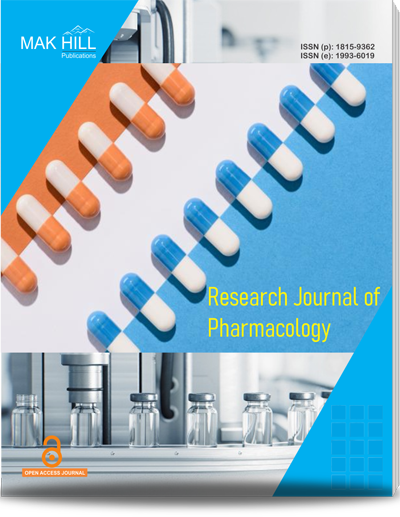
Research Journal of Pharmacology
ISSN: Online 1993-6019ISSN: Print 1815-9362
Abstract
50 cases of suppurative keratitis were studied. Males were predominantly affected (64%). Incidence of suppurative keratitis is more after the age of 30 years and less after the age of 60 years. 52% of the cases belonged to agricultural workers of low socioeconomic group. 50% of the patients had used antibiotics or antifungal prior to admission. Trauma contributed to 76% of corneal ulcer. 44% of the ulcers were of moderate severity. 14% of the cases had chronic dacryocystitis. Common clinical characteristics of fungal keratitis were long duration of onset of symptoms, dry with raised slough ulcer in 81.2% of cases, satellite lesions in 62.5% of cases and hypopyon in 87.5% of cases. Common clinical characteristics of bacterial keratitis were short duration of onset of symptoms, greyish white with curdy purulent slough in 71.4% of cases, 64.28% cases presented with hypopyon. Fungus was the most common cause for suppurative keratitis (32%) 18% fusarium and 14% aspergillus, were grown on culture. Staphylococcus aureus forms the main bacterial pathogen (16%), Pseudomonas, Streptococcus pneumonia, staphylococcus epidermidis being the second (8%). 5% natamycin was the most commonly employed antifungal drug (63.16%). Commercially available fluoroquinolones (0.3%) were the main drug of choice for bacterial infection. 54% of the cases ended in macular opacity. Central corneal ulcers resulted in gross loss of visual acuity. Most community acquired suppurative ulcers resolve with appropriate treatment. Delay in diagnosis probably contributes to poorer outcome from therapeutic measures. These findings have important public health implications for the treatment, rapid referral, diagnosis and prevention of corneal ulceration in the developing world.
How to cite this article:
Ramesh Devarasetty, Taniparthy Shruthi and Borra Harish Laxman. A Prospective Clinical Assessment Study of Suppurative Keratitis.
DOI: https://doi.org/10.36478/10.36478/makrjp.2024.4.28.33
URL: https://www.makhillpublications.co/view-article/1815-9362/10.36478/makrjp.2024.4.28.33